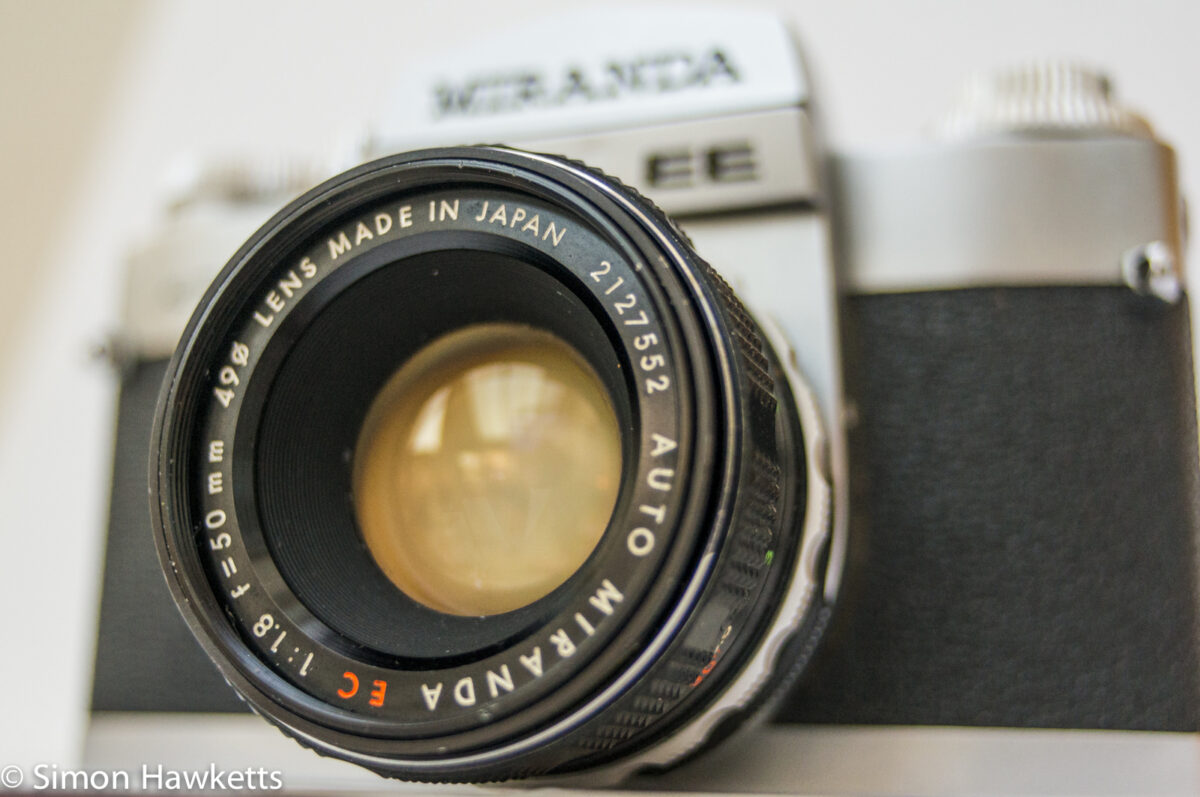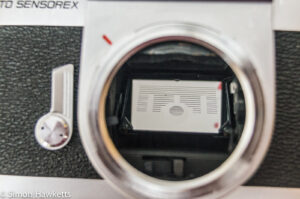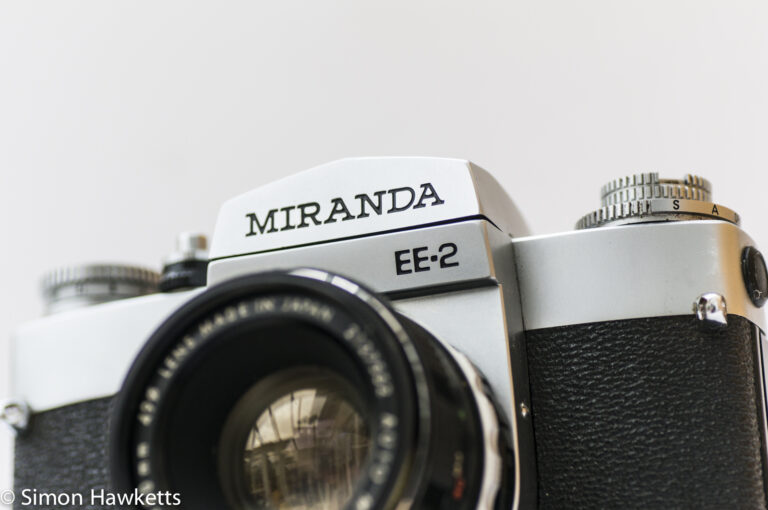Miranda Sensorex EE 35 mm SLR camera
This is the final post in my current series on the Miranda cameras in my collection, hopefully not because I won’t ever buy any more – just because I’ve caught up with the current state of my collection. This is a Miranda Sensorex EE, which I added to my collection a couple of months ago. It was the model introduced just before the Sensorex EE2 and shares many of that cameras’ features.
Miranda Sensorex EE Images
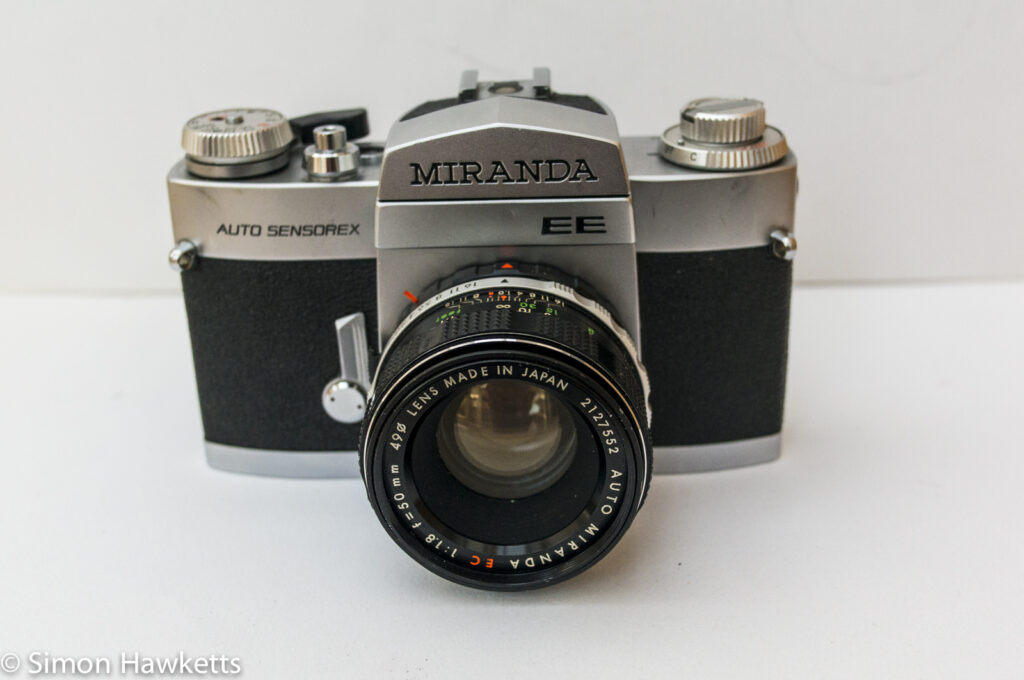
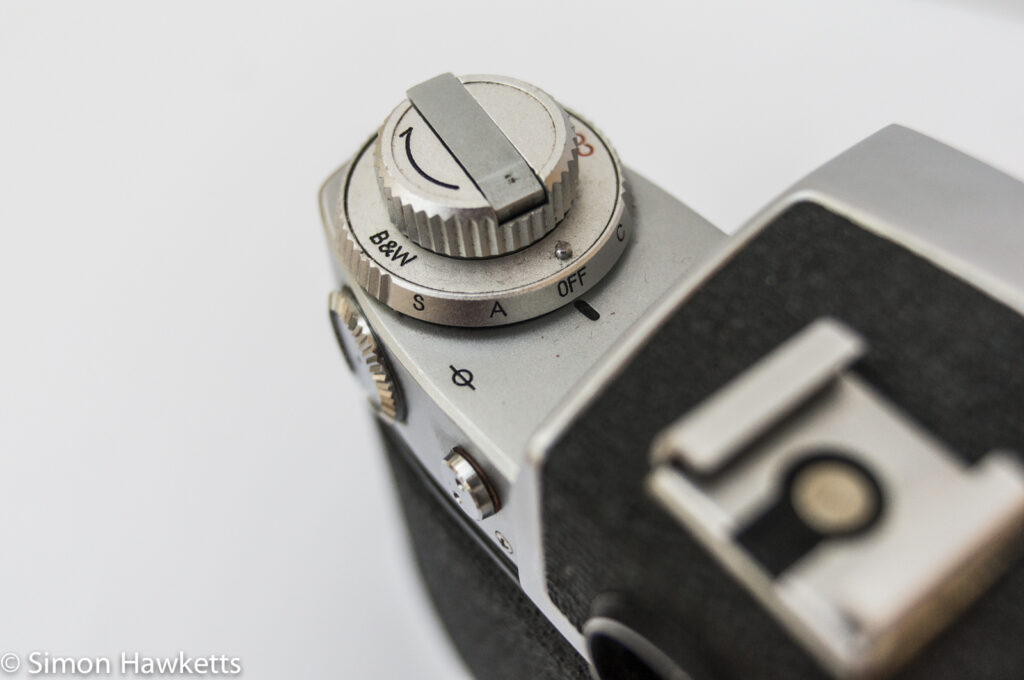
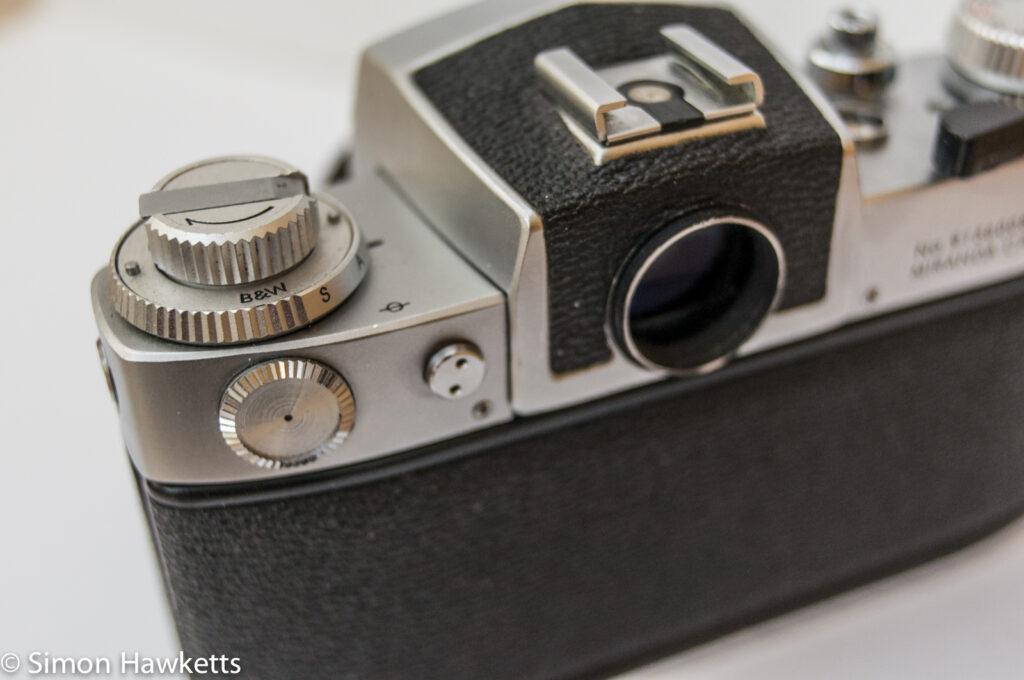
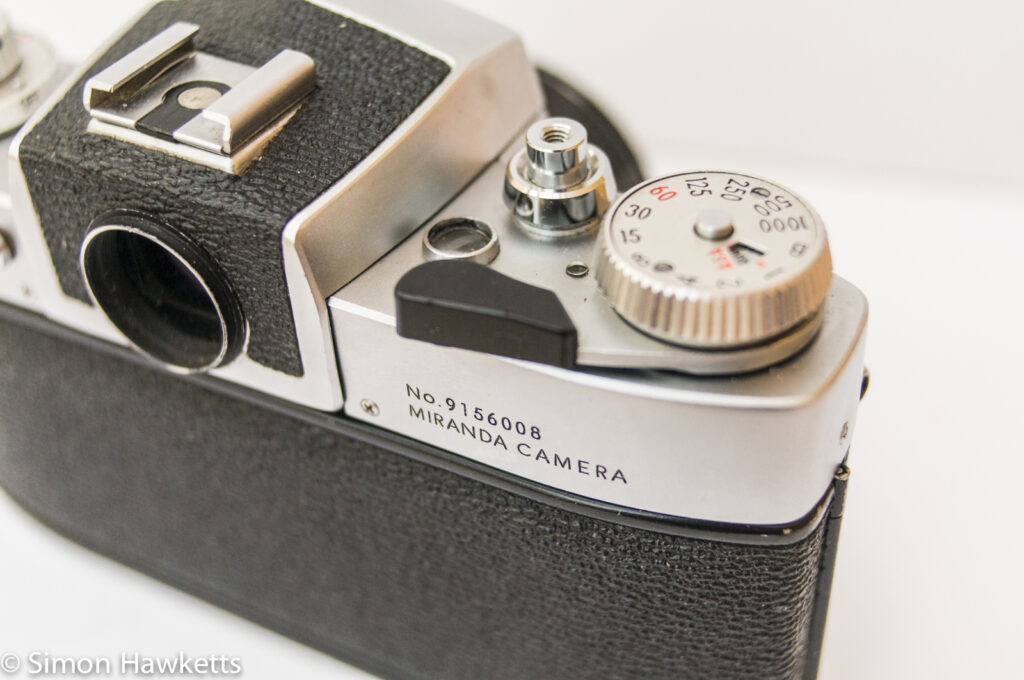
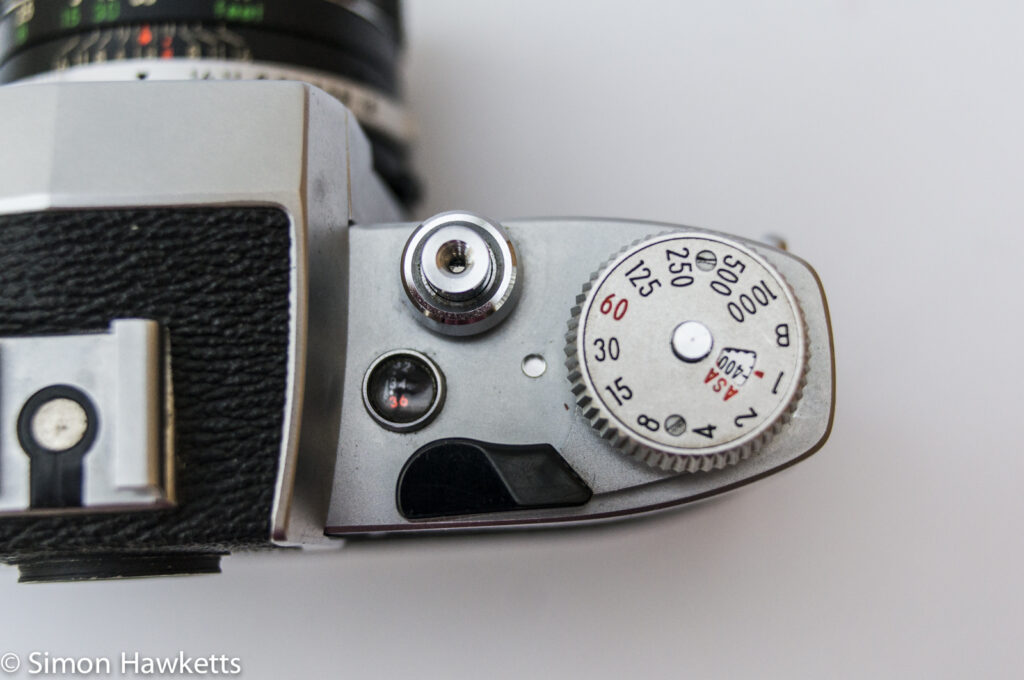
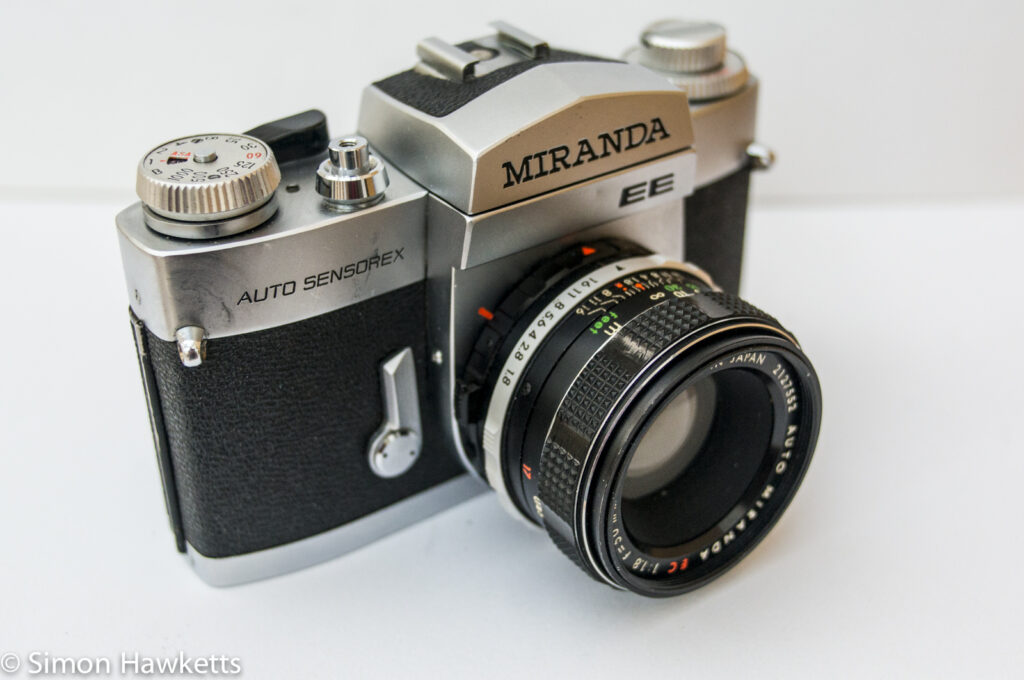
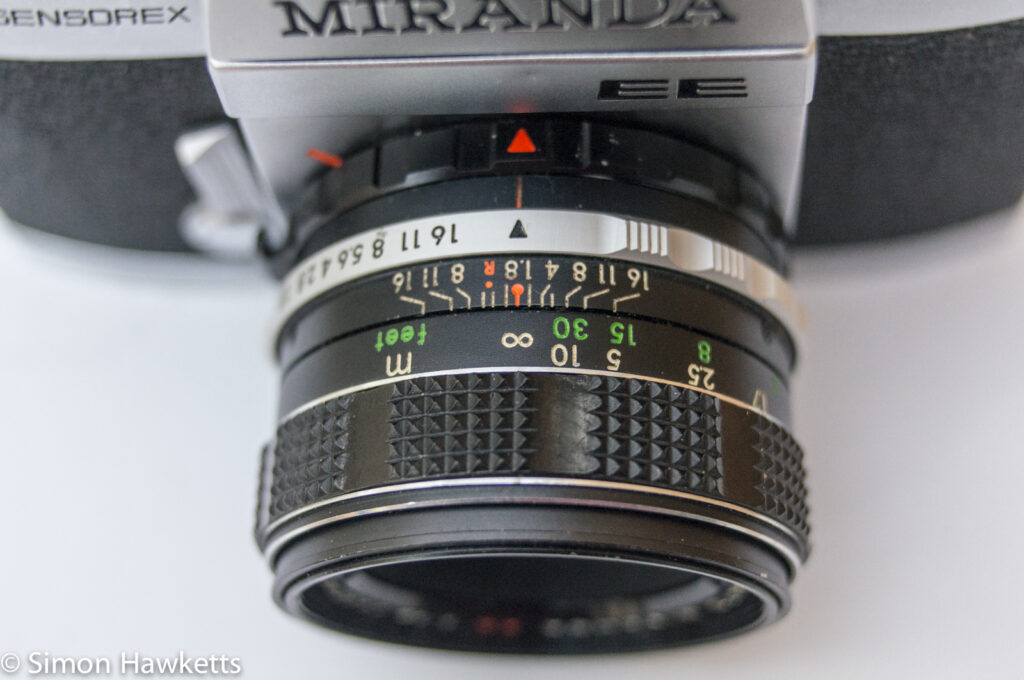
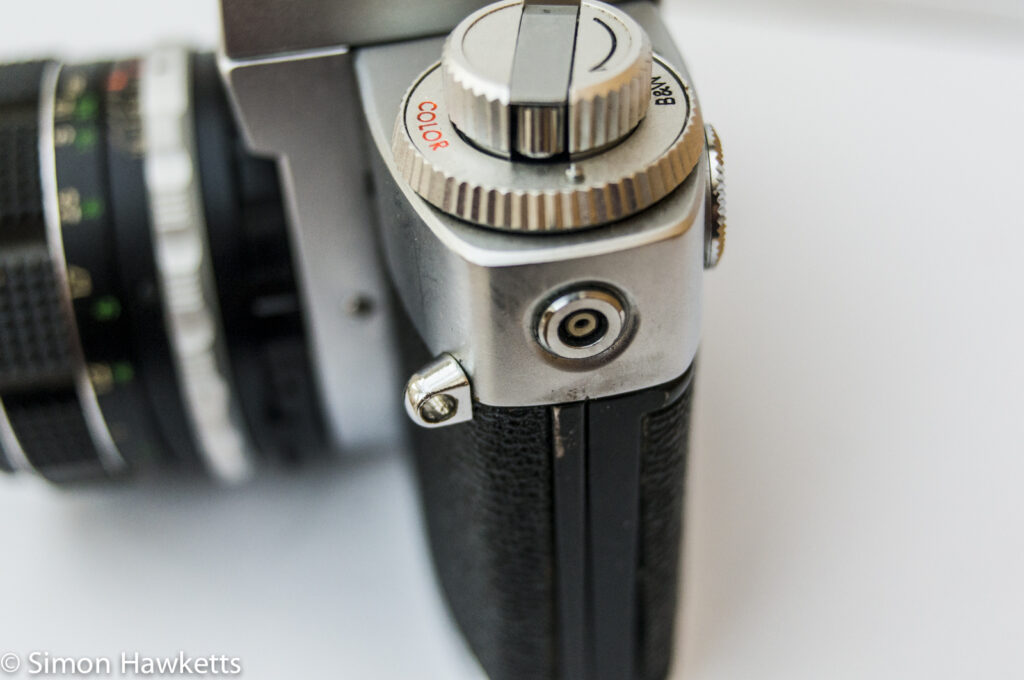
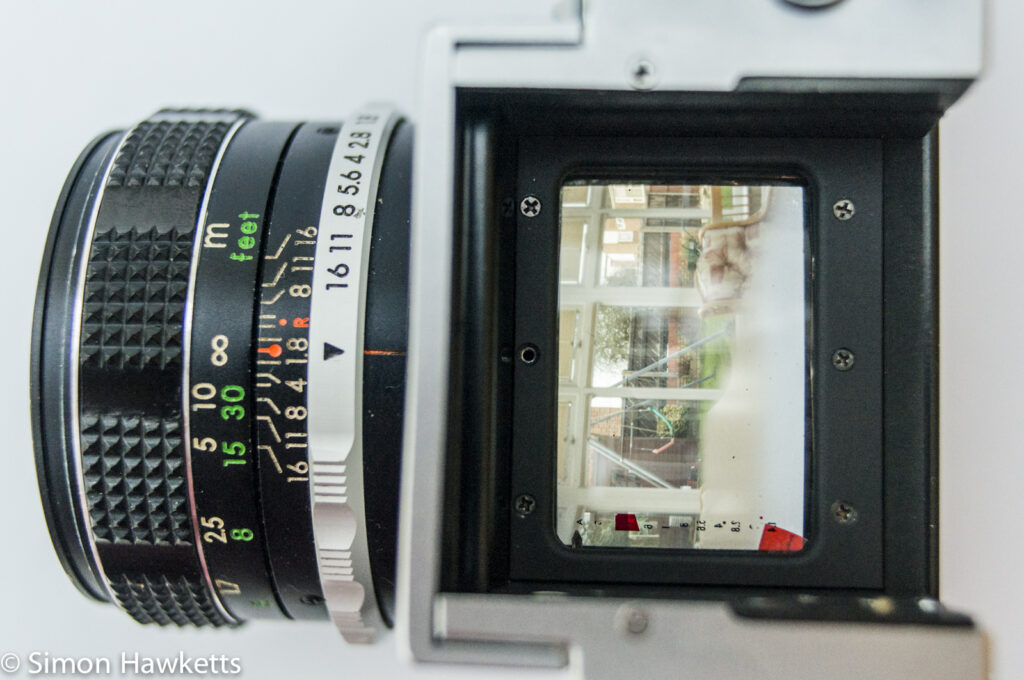
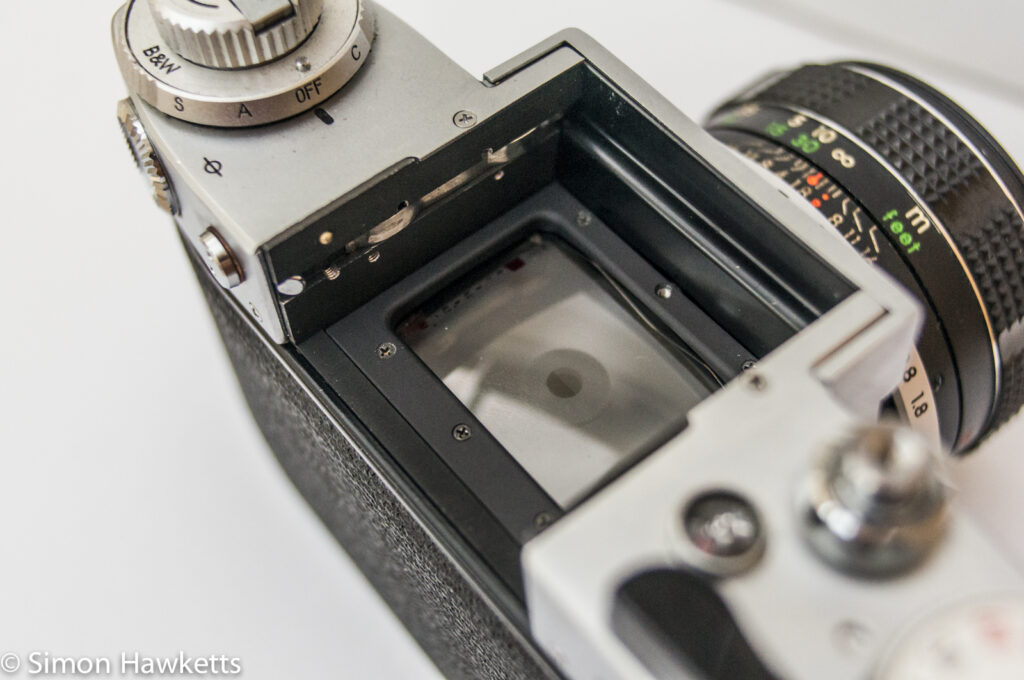
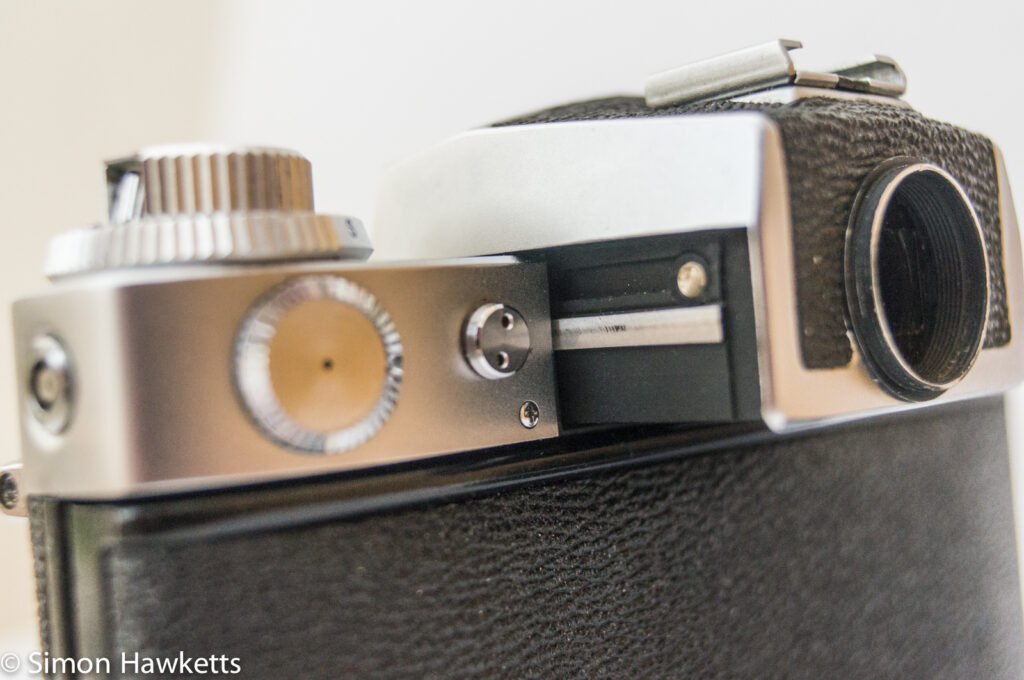
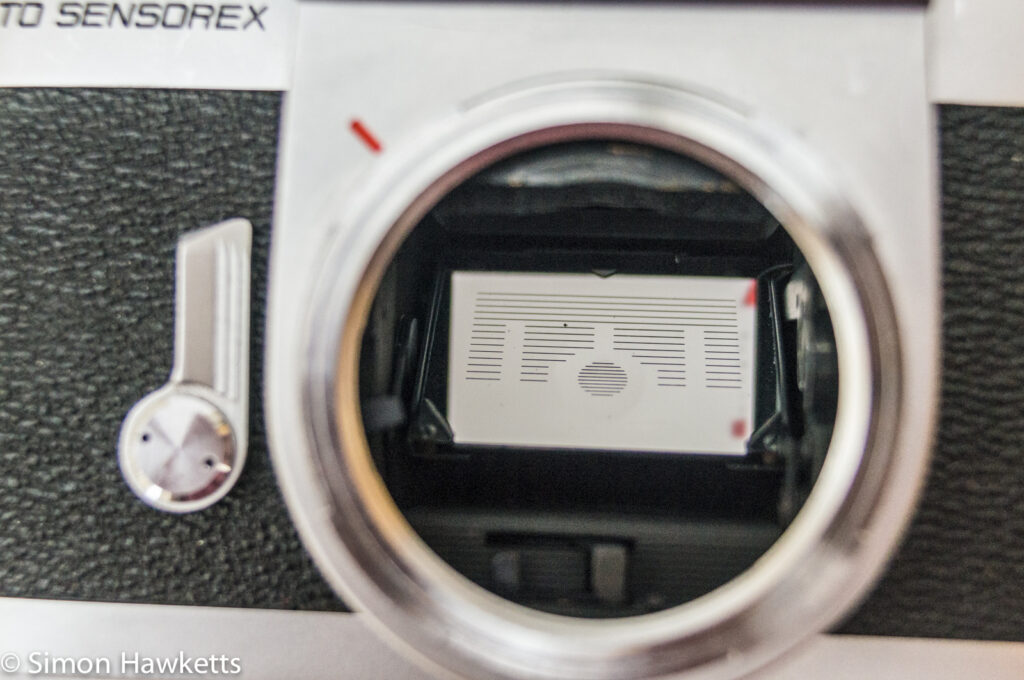
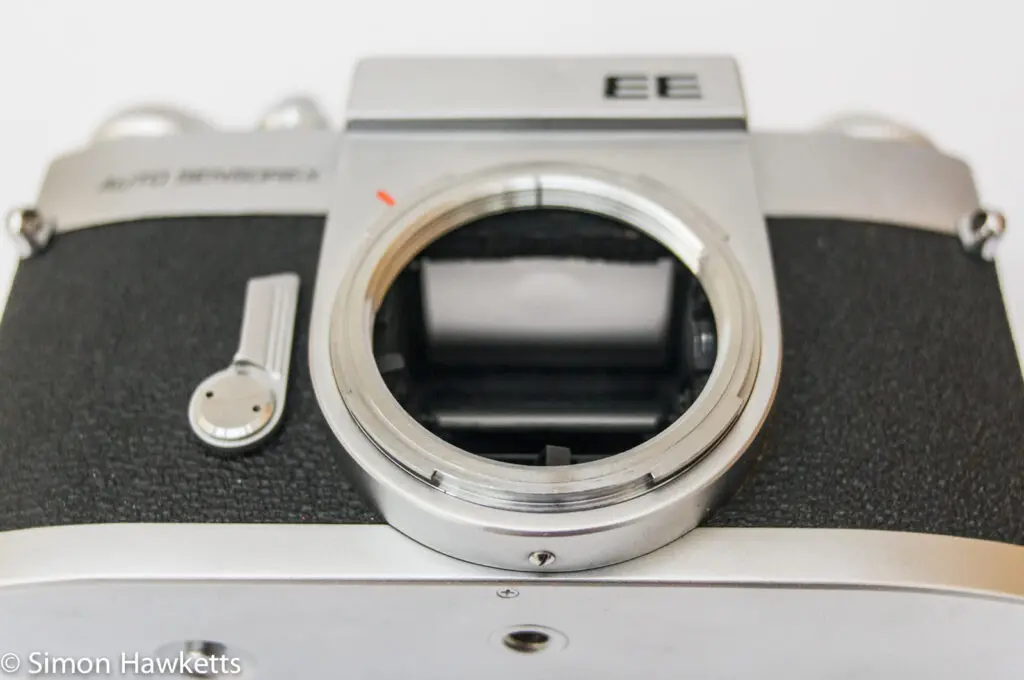
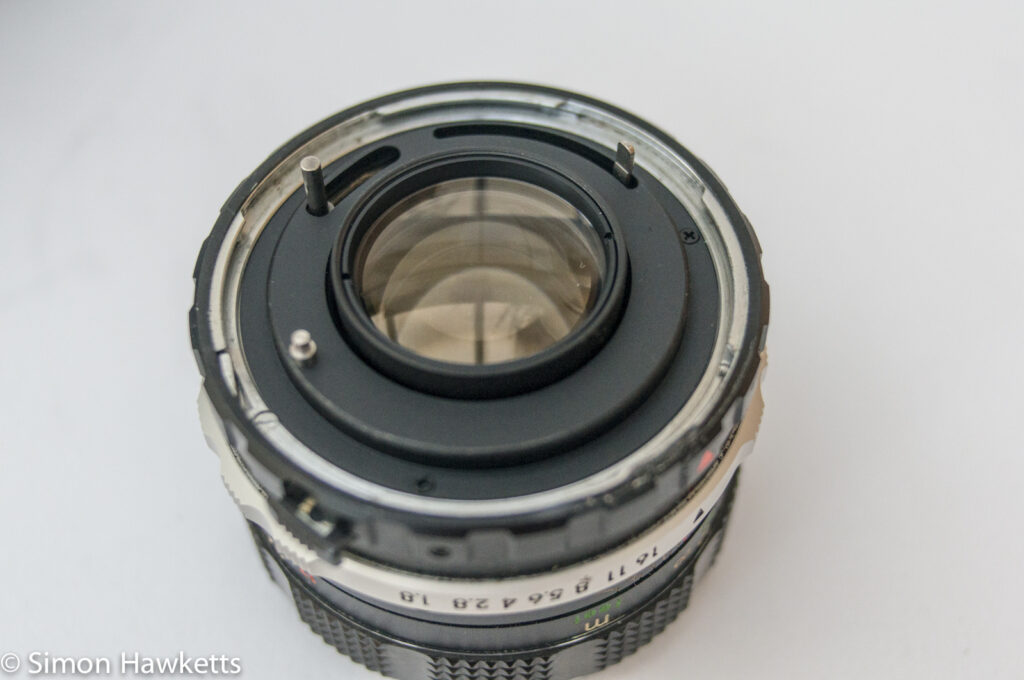
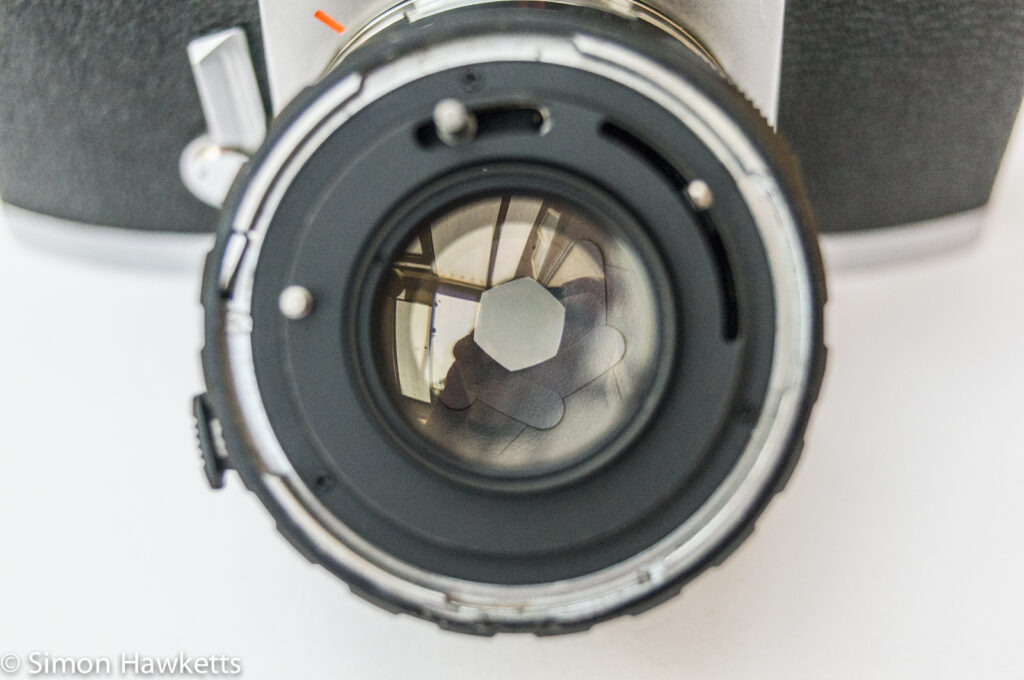

My Miranda Sensorex EE camera
I paid £10 for this camera, body only, from a seller on eBay. Because I don’t actually have a spare 50 mm EC Miranda lens, the photos above show the camera fitted with the lens from my Auto Sensorex EE2, and I have started looking for another 50 mm EC lens.
The camera seems to be fully working. The only issue which was reported as being faulty was the frame counter, which wouldn’t reset when the camera back was opened. I managed to repair that by removing the top plate under the shutter speed adjustment and removing the small piece of metal which was floating about and had jammed the mechanism. There are a few small mechanical issues – some marks around the ‘AUTO SENSOREX’ on the front, a very small mark next to the ‘EE’ on the centre lens mount, the battery compartment cover is missing it’s decorative material cover and the wording in the viewfinder is a bit faded.
Viewfinder
As with all the ‘proper’ Miranda cameras, this one has a replaceable viewfinder. There is a small lever between the eyepiece and the battery compartment which can be slid across to release the viewfinder, which then slides out of the back of the camera. This allows waist level and magnified finders to be slotted in, giving the photographer a more versatile camera as a result. The eye level finder which is fitted to this camera also has a hot shoe accessory slot fitted, which is electrically connected to the camera via a small contact with the camera body as the finder is slotted into place.
The viewfinder has a nice, clear display and shows all the information displayed on the focusing screen well. The standard focusing screen on this camera has a rangefinder style split display in the middle, with a micro prism larger circle around it and then a ground glass area over the rest of the screen. The exposure information is displayed down the right-hand side of the screen, which, as I said above, is a little worn on this camera.
Exposure system and metering modes
The exposure system in cameras of this vintage are remarkably simple compared to modern digital cameras. There is a photo resistive cell, a battery and a moving coil meter (some even simpler arrangements used a voltage generating photocell and so didn’t even
Like many Miranda cameras, the metering sensor is built into the mirror. In this camera, the photo resistive cell is fitted behind the mirror so that it can be used irrespective of the viewfinder fitted to the camera. The needle of the moving coil meter is fitted, so it shows on the focusing screen, and the battery compartment is on the back of the camera. Most of this design is dictated by the fact that the viewfinder is replaceable, but it’s a pretty good design and seemed to work well.
The metering modes available are averaged and spot metered, which were selectable from the meter mode switch fitted around the rewind crank, and an indicator in the viewfinder changes to show which mode is selected as you take the shot.
When it comes to determining the correct exposure for the picture being taken, this camera offers either ‘automatic’ or manual mode. In automatic mode the aperture on the lens is switched to allow the camera to control the aperture and then as the shutter speed is selected the camera selects the correct aperture for the picture. In modern parlance, this is ‘shutter priority automatic exposure’. There is an aperture scale in the viewfinder to allow the photographer to see the aperture selected.
In manual mode the aperture and shutter speed can be selected, and then the meter needle simply shows the aperture that the camera would select if it was in auto mode. If the photographer selects the aperture shown in the viewfinder, the exposure will be ‘correct’, but it allows for creative adjustment.
As with the EE2 camera, the shutter speeds can only be selected within a certain range of settings which are dependent on the film ISO, but there is an ‘unlock’ button on the top of the shutter speed which allows this to be overridden. As I was taking the control apart to fix the frame counter, I found this was the most complex piece to re-assemble, and it took me several attempts to get it right.
Other features of the Miranda Sensorex EE
Other notable features of the Miranda Sensorex EE camera are the flash sync socket fitted to the side of the camera, the self-timer, the standard Miranda dual mount and the depth of field preview fitted round the side of the lens.
This series of cameras were some of the last produced by Miranda before they went bust in the mid 1970s, and then re-appeared as a name badge on a Dixon’s camera. They are beautifully engineered and have a great ‘feel’ to them. I think they are one of the more interesting 35 mm film cameras.
Miranda Sensorex EE Specifications
- Miranda Sensorex EE 35mm film camera
- Manufactured around about 1974
- Replaceable viewfinder with eye level and waist level options available
- Shutter 1 – 1/1000 + B
- Top plate shutter release
- Self timer
- Spot and Averaged metering
- In viewfinder exposure indication
- ASA 25 to 1600
- X and FP sync socket
- Hot shoe accessory socket
- Miranda bayonet and screw lens mount
- Depth of field preview
- 50mm f/1.8 EC bayonet mount lens
- In built lens hood on the 50mm lens
- Manual available on-line here
Update : Some samples taken with this camera
Discover more from Everything Vintage
Subscribe to get the latest posts sent to your email.

